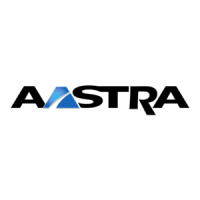Ascotel IntelliGate 2025/2045/2065
324 Call Routing Part 2
to-end within the ISDN network (end-to-end ISDN connection) or whether sec-
tions of it are analogue (non-end-to-end ISDN connection).
At transitions to other networks (for example from leased-line-network to cellular
network) it is possible, due to the lack of correct signalling, that an end-to-end
ISDN connection is signalled as a non-end-to-end connection.
End-to-End ISDN Connection
The release signal is sent as soon as the call is completed.
Non-End-to-End ISDN Connection
With non-end-to-end ISDN connections the amount of time between the comple-
tion of the call and the release depends on who set up the connection:
• If the PBX subscriber set up the connection (i.e. from the PBX’s viewpoint an
outgoing call), and the external partner (subscriber C in Fig. 2.85) hangs up, it
can take a few minutes for the release signal to be sent.
• If one of the external partners set up the connection (i.e. from the PBX’s view-
point an incoming call) and the external partner (subscriber B in Fig. 2.85)
hangs up, the release signal is sent immediately.
Note:
If two announcement services such as sports and weather information
are connected with each other, this exchange-to-exchange connection
will not be cleared down automatically This can lead to high call charges.
Each exchange-to-exchange connection will be cleared down by the PBX after
two hours.
Note:
If an exchange-to-exchange connection is transferred to the exchange
using Partial Rerouting or Call Deflection, the PBX no longer has any
control over the connection and therefore cannot disconnect it.

